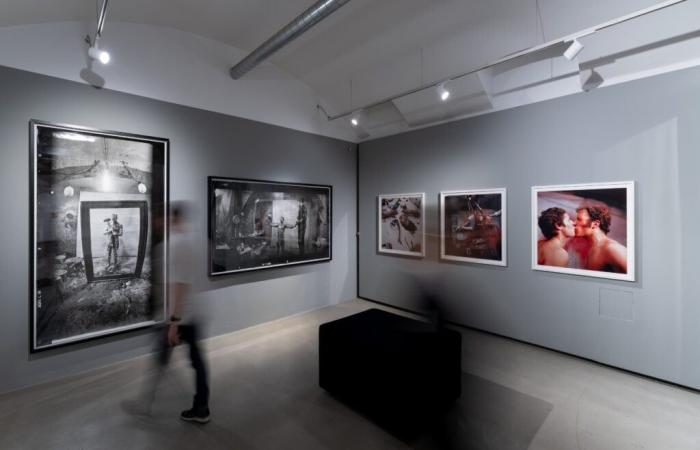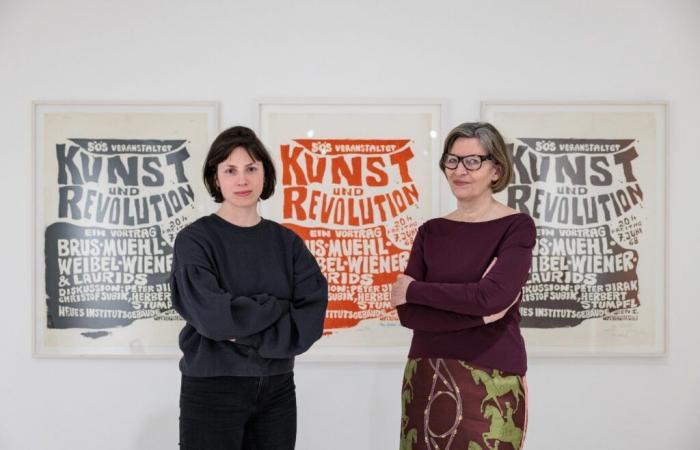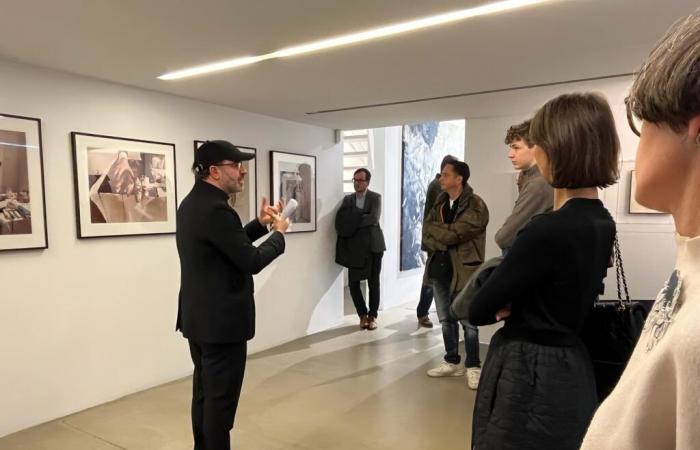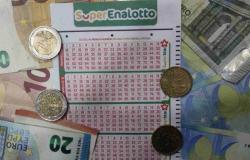Although sixty years have passed since its very first manifestations, Viennese Actionism still remains today a body of study that has not been fully explored, with critical considerations resulting, for the most part, from those troubled historical-national processes that characterized the Austrian post-war period. To compensate for this deficiency, we welcome the initiative of a group of collectors to open a specific museum to delve deeper and create new investigative connections on one of the most controversial and stimulating seasons of twentieth-century European art. Opened on March 15, the WAM (Wiener Aktionismus Museum) offers within a voluminous (about 900 square metres) two-storey complex a purposeful cross-section of Viennese Actionism, its protagonists and various thematic points for reflection on the artistic and social role that the movement had in its golden decade, the Sixties.
The exhibition on Viennese Actionism
Günter Brus, Otto Muehl, Hermann Nitsch and Rudolf Schwarzkoglerthe most representative names of Actionism, are proposed for the first time in their autonomous artistic physiognomy, i.e. without the need to directly compare their work with other international groups, alluding, however, very often to the characteristic ascendancy of the Austrian current towards other artistic genres, such as performance art and body art.
“We have divided our first museum exhibition, WHAT IS VIENNA ACTIONISM?in a journey of seven subsequent sections, to allow the visitor the choice of a free and personal or didactic and chronological use, so as to make the visit pleasant for both connoisseurs and neophytes of Actionism” thus explains the young director of WAM Julia Moebus-Puck. Painting, photography, collages, mixed media works and an emblematic final video, Zerreißprobe (Stress Test) by Günter Brus dated 1970, allow us to understand the scenic richness of the exhibition, which can be visited until 31 January 2025, built specifically with the aim of inclusiveness, despite the typical crudeness of this artistic form.
So, “what is Viennese Actionism”?
The article continues below
The birth of Viennese Actionism
In an attempt to overcome painting with a physical and majestic presence, a close-knit group of Viennese artists began in the early Sixties to increase the use of color on the canvas with organic elements and impetuous gestures; to the material tests of Hermann Nitsch and Otto Mühl, the first known for the use of blood in his abstract paintings and the second for the sculptural works originating from garbage, perfectly combine the actions of chromatic self-sprinkling of Günter Brus (the body that becomes canvas) and the extreme performances Rudolf Schwarzkogler, the youngest to join the movement and died prematurely in 1969, not even thirty years old. Viennese Actionism, which was born in the arms of Austrian Expressionism, Egon Schiele, the philosophy of Ludwig Wittgenstein, the revolution of Sigmund Freud, did not have a real programmatic status and the same term was coined posthumously by the artist and scholar Peter Weibel , however, the origin of the artistic movement dates back to June 1962, with the event Die Blutorgel where Mühl “imprisons” himself in the basement of his house together with Nitsch and Adolf Frohner, creating works and performative actions, including the upside-down crucifixion of a slaughtered and disembowelled lamb (procured, appropriately, already lifeless).
“Digging into the intimacy of the matter, just as a Freudian psychoanalyst does with the mind, the Actionists have moved from pictorial matter to an investigation of the body and the surrounding reality: the irreverent and sometimes self-destructive attitude of their performances has a cathartic value, attempts to free art from academic yokes and, subsequently, through the timely use of photography, to free the medium from its univocal documentary action, creating real tableaux photagraphy”. Thus speaks the chief curator of the WAM as well as curator of the inaugural exhibition Eva Badura-Triskawho does not fail to recall the growing collective action of the movement and the political stance of some of their interventions: “The grotesque carnival of Vietnam Party of 4 July 1966, where the artists are joined by several specially invited ‘extras’, aims to show both the bestiality of war and the paucity and bourgeois disenchantment of pacifist demonstrations: art, however, through this collective action with Otto Mühl and companions who stage, with bandages, prostheses and corsets, a pantomime of a war scenario, simulating reality in its most brutal aspects. Without to forget Kunst und Revolutionheld in the Aula Magna of the University of Vienna on 7 June 1968, the artistic-political summa of Actionism and the first institutional scandal of the movement”.
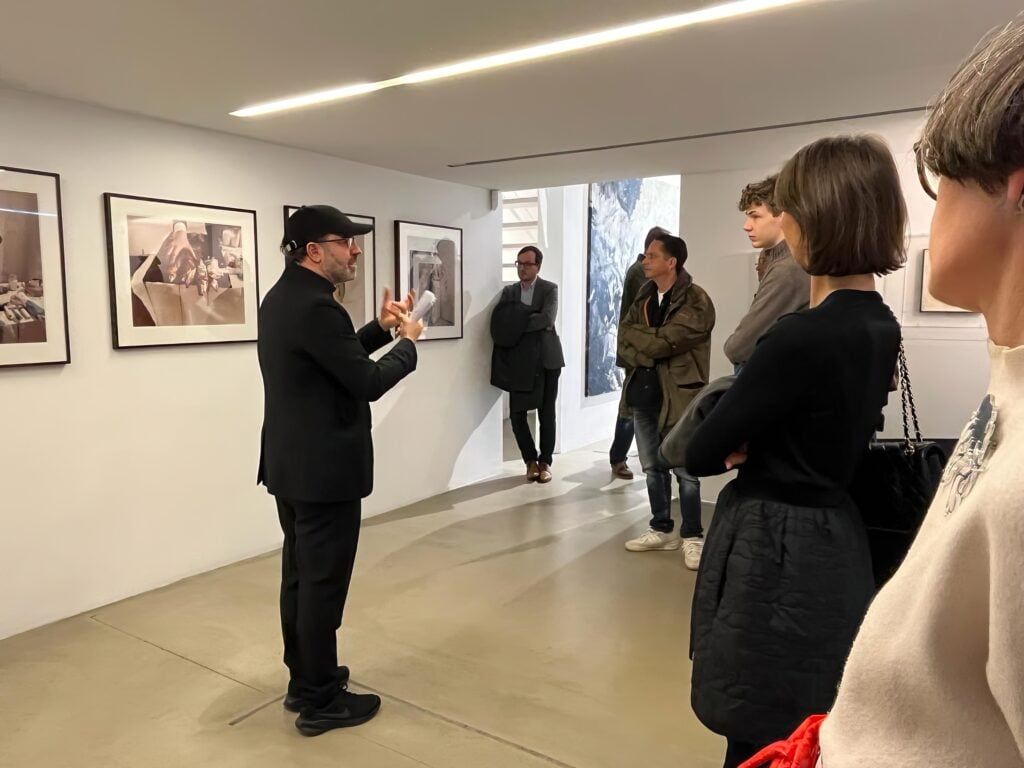
Interview with the WAM curator
Along the same line of thought, stressing the importance of the “driving force” of the movement, with which Europe welcomed the cultural revolution of 1968, the theme also affects Marcello Farabegolicurator of the museum focused in particular on promoting Viennese Actionism abroad.
Which aspects of Viennese Actionism deserve attention?
Viennese Actionism is one of Austria’s most important contributions to the international post-avant-garde of the 1960s. He produced radical innovations on a formal, aesthetic and conceptual level. One aspect of Viennese Actionism that I find particularly stimulating is the strong controversy that this artistic movement understandably aroused at the time and that it still arouses today. However, these are not banalities or “provocative clichés” that only serve to attract attention.
Given your previous role as curator of the Sammlung Friedrichshof (Friedrichshof Collection), from which the bulk of the museum’s works was acquired, you bring with you an exceptional wealth of experience and knowledge regarding Actionism. Is it an exhaustive object of study? What connection can it have with the current panorama?
I am fascinated by art that dares to push itself to the extreme limits in an intelligent and authentic way. Going into the merits of Actionism, I found very interesting both the references to the Wiener Moderne, I am thinking above all of Egon Schiele, and even more so the comparisons with the international currents more or less parallel to the period, such as Fluxus or the happening, naturally referring to Allan Kaprow, but also to a Carolee Schneemann. And to stay in Austrian territory, do not forget the unparalleled Valie Export.
Furthermore, Viennese Actionism had a direct impact on reality and insinuates itself, so to speak, under the skin of the observer when he approaches its psychoanalytic substratum. The Viennese Actionists have often been the subject of controversy or at least very conflicting opinions and in some cases, such as that of the reception of Otto Muehl, in my opinion a particularly deep contextualization and critical examination are absolutely necessary. But an artistic movement that, decades later, is still capable of sparking lively debates must, in my opinion, grip the very essence of our existence, regardless of or precisely because of the ideological questions it raises. At the moment I am deepening my research to find “traces” of Viennese Actionism in contemporary artists, especially performers, going, if you will allow me this quote from Cronenberg’s latest film, up to the “crimes of the future”.
Are there any current or future projects you can tease?
I am preparing a retrospective of Rudolf Schwarzkogler for the Museo Novecento in Florence which will take place next year at the latest and which I will curate together with Eva Francioli, curator of the said museum, under the artistic direction of Sergio Risaliti. In addition to numerous loans from the MuMok – Museum Moderner Kunst Stiftung Ludwig Wien, which I am defining in recent weeks, I will naturally also be careful to bring to Florence some of the most beautiful pieces by Schwarzkogler that we have in our collection at the WAM. Furthermore, I am in contact with the Museo Antiguo Colegio de San Ildefonso in Mexico City to define my exhibition proposal in which, together with the curator José Manuel Springer, I would like to correlate Viennese Actionism with contemporary Mexican artists. Furthermore, I frequently hear from some colleagues in Japan to show Viennese Actionism together with Gutai in a museum. In short, I am sowing proposals all over the world to sprout various exhibitions revolving around the important collection of the WAM in the coming years.
Luca Sposato
Artribune is also on Whatsapp. Simply click here to subscribe to the channel and always be updated

